Learn more about the unique and diverse dives sites we regularly explore in Komodo National Park.
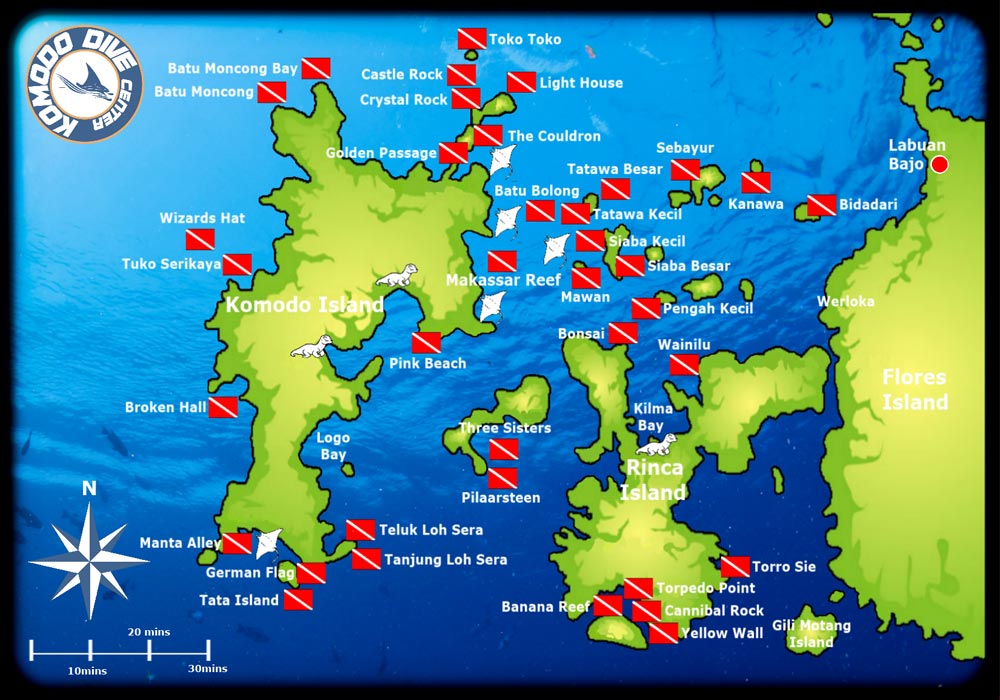
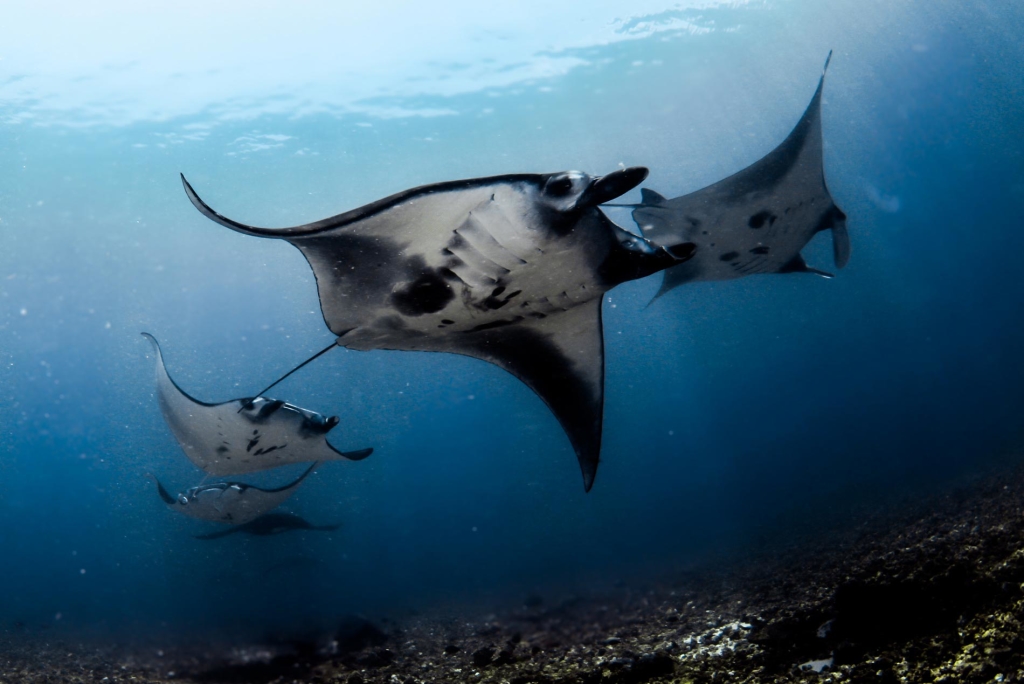
Name: Manta Point
Max.depth: 15m
Type: Reef
Current: Mild-strong
Manta Point is actually not a point at all. The original name is Kurang Makassar and it is a small island off of the east side of Komodo with a series of long current swept reefs running north to south, creating both a highway and a feeding ground for these giant and graceful rays.
This is one of the must do activities while diving. One of the most famous dive sites in Komodo National Park, this is the place where it is almost grunted mantas. These majestic creatures come to this spot mostly to feed during heavy current. Because of this, Kurang Makassar is usually a drift dive where there is moderate to heavy current.
It is one of the most relaxed drift dives in the park, however. Along the bottom your guide will take you to 12 to 14 meters along broken reef that looks as if it were sculpted that way. Locals say the reef is like that due to cyanide fishing, though there is a healthy line of reef at many places. Typically, the mantas use large coral bommies and the interspersed reef for shelter during heavy current, gracefully gliding up and down with their mouths wide open, feeding on plankton and other objects.
The current runs either north to south or south to north with a falling or rising tide respectively, and as you float along with your guide hopefully you will come across a manta. Once this happens we typically breathe out and get negatively buoyant and try to grab onto the sea floor so we can sit and rest while the mantas play around us. It is an amazing site and sometimes, if you are lucky, you can get inside packs of mantas as they majestically float along the heavy current as if it did not take them an ounce of energy.
If mantas are not present, which is sometimes but rarely the case, there is still plenty to see. The long sections of coral reef are perfect places for sweetlips, emperors, white tip sharks, and more. Mantis shrimp are abundant here, so look in rocks and crevices if you can to spot their wild eyes sticking out. They are curious creatures, manic in nature, but be careful as their appendages can shoot faster than a .22 bullet! Many a goggle glass has been cracked by these brightly colored underwater killers.
Along the long coral patches you will find morays, clown trigger fish, filefish, unicorn fish and fusiliers schooling above.
True enough, this site has plenty to see for everyone and is usually one of the most memorable dives in the park.
Max.depth: 30
Type: Sea-mount
Current: Mild-strong
One of the most famous dive sites in Komodo National Park, Castle Rock is a current swept seamount 4 meters under water on the north side of Komodo, north of Gili Lawa Laut.
It is here where you will see an abundance of big fish rarely seen in many other diving areas. Typically, the current is strong, and these fish come for food and for shelter, using the large seamount as a haven.
Usually we dive from the current side to the lee side of the mount. Around 20 to 30meters in the front of the mount, you can usually see giant gray reef sharks, white tip sharks, and schooling palagics of all size. Because the current can be intense here, most often you will use a reef hook or your hand to gain purchase somewhere and watch the show around you.
Along the northern and southern slopes lie huge coral formations adorned with the bright whisping branches of noble feather stars, and here there are giant travelly and jacks among grouper, emperors, and other large fish. Schools and schools of surgeonfish rise to the surface in giant black pinnacles. Many of the time, fusiliers are too many to number, and if you look along the rocks you can also find clumps of sweetlips and snapper all herding together and looking like one giant commensal organism. In addition, among the branching corals you can look for a variety of multi-colored wrasse, tobies, filefish and gobies.
Micro life at Castle is also abundant, and among the corals you can find nudibranchs in many varieties, including the Blue Dragon, a nudibranchs with giant feathering lion’s manes stretching in rows down its back. One can also find a variety of shrimp, morays, sea snakes, and crabs among the corals. When Castle Rock hits, many people come up from the dive site cheering.
Typically we will perform a safety stop at the largest of the seamounts, and we will hide just behind the rock and wait at 5 meters while watching the show unfold all around us. It is also fun to pick your head up above the mount, as usually the current is uncannily strong, and you can watch you and your fellow divers as their heir gets blown back and the bubbles from their regulators travel behind them at light speed.
Max.depth: 35m
Type: Sea-mount
Current: Mild-strong
Crystal rock is a series of rocks that make a large seamount between Castle rock and Gili Lawa Laut. It is an amazing dive with a variety of colors and fish life and very similar to castle rock, with more bright colors but typically less schooling fish.
Fish here are abundant however, and yellow-ribbon sweetlips, surgeonfish, and anthias school all around the site. The rock itself is large and along the north end there is a series of walls covered with soft corals and large fans. In addition, this site has numerous interesting nudibranchs and flatworm species, including a strange looking elk horn sea cucumber with bright gold and yellow colors.
Along the northwest of the site there is a seamount that extend out from the main rock. The valley between is usually swept by current but has an amazing array of schooling fish. Look under the table corals and you may encounter a grouper, barramundi, or other interesting rockfish species. Schools of eagle rays and devil rays have also been spotted in this area. Along the mount is another area that houses protection for a lot of fish. The mount is covered in wonderful colors of orange, yellow, red and blue soft and hard corals. Further on, if you dare, is a broken coral bottom where white tip sharks and gray reef sharks are commonly spotted.
The southern side of the site is also amazing, and though the shallows are comprised of a lot of broken corals, once one goes deeper there are amazing coral formations with large fish, along with elk horn coral and other smaller mounts and boulders that house protection for many interesting species.
Once we are done diving the site, a three-minute safety stop at the three rocks is a great place to look for morays, stonefish, crocodile fish, day octopus and giant lionfish. This is truly an amazing site, and in conjunction with Castle Rock you are sure to be pleased.
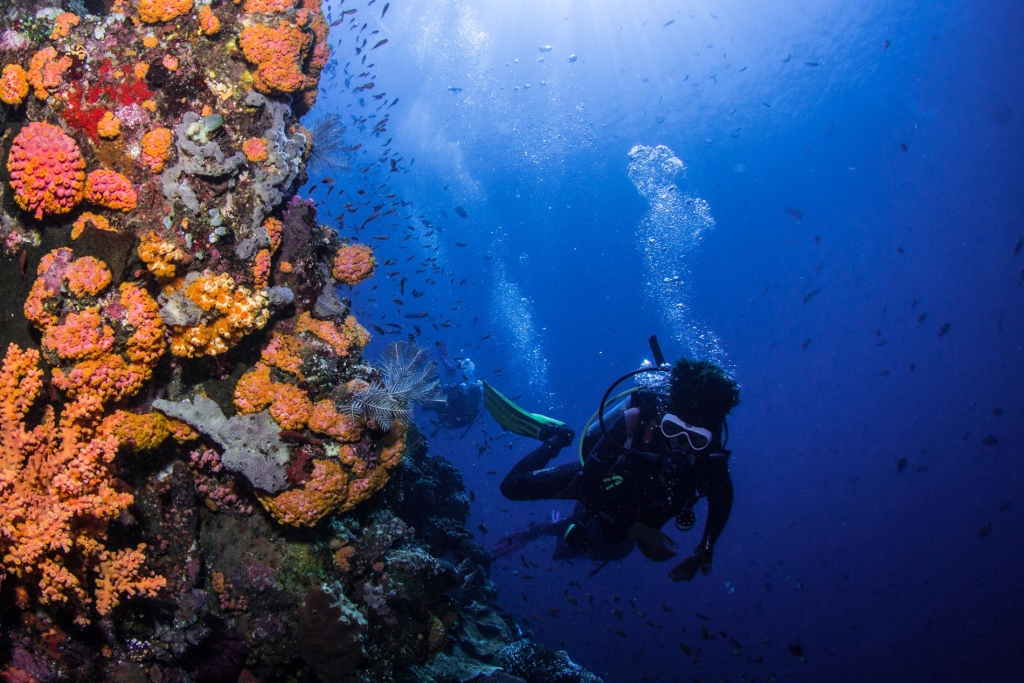
Name: Batu Bolong
Max.depth: 40m
Type: Wall
Current: Mild-strong
One of the most famous sites in Komodo National Park along with Mata Point and Castle Rock, Batu Bolong is a small island swept by the strong currents that run north and south between the Pacific and Indian Oceans. On any given day, if the current is remotely strong, whirlpools form on each side of the island and it is a great place to witness the mighty power of these strong currents. Because of the current, however, this place is literally teaming the ship and more than one time, guests have come up from a dive with thumbs up yelling “fish soup.”
“Batu” means rock and “bolong” means hole, and the giant hole in the south side of the rock that looks as if it was laid by ancient masons is why this island has the name. There are usually two ways to dive this site, depending on the current.
With a falling tide the current runs north to south and you will enter in the lee of the island, usually on the eastern side. Here there are large walls and crevices that go all the way to the south in a series of waves. Inside these crevices giant grouper hide, as well as moray eels, huge Indian lionfish and the occasional turtle. Along the bottom are giant fallen blocks at 30 meters where an occasional manta is spotted as well as teeming schools of tuna, trevally, and other large species.
Rising tide is very similar, however the north side has a giant wall that goes down to 35 meters along with a series of spurs that are literally littered with giant table corals and incredible formations of barrel sponges. You will zigzag with your guide between the northeast and northwest, using rocks for cover with the current. Along the spur there are giant sweet lips of a vibrant yellow and silver color, as well as grouper, emperors, bass and coral trout. The large gregorian fans here are incredible, and many of them hang off of the different walls in red, white, and pink.
Along the southern side are a large wall and then a spur with a large coral garden. Every inch of this site, both north and south, is littered with fish as the small ones seek shelter from the current and the larger ones use the current for feeding.
This is truly an amazing site at all levels, with plenty to see, and incredible vibrancy of life. The dive profile, unless dove in slack tide, is a zigzag from deep to shallow. Remember that the down currents here along the side of the island can be extreme, and you will see giant fish struggling to stay level and then falling into the abyss. Because of this, it is important to let your guide go first. If you fallow an experienced guide, you will truly see an awesome act of nature.
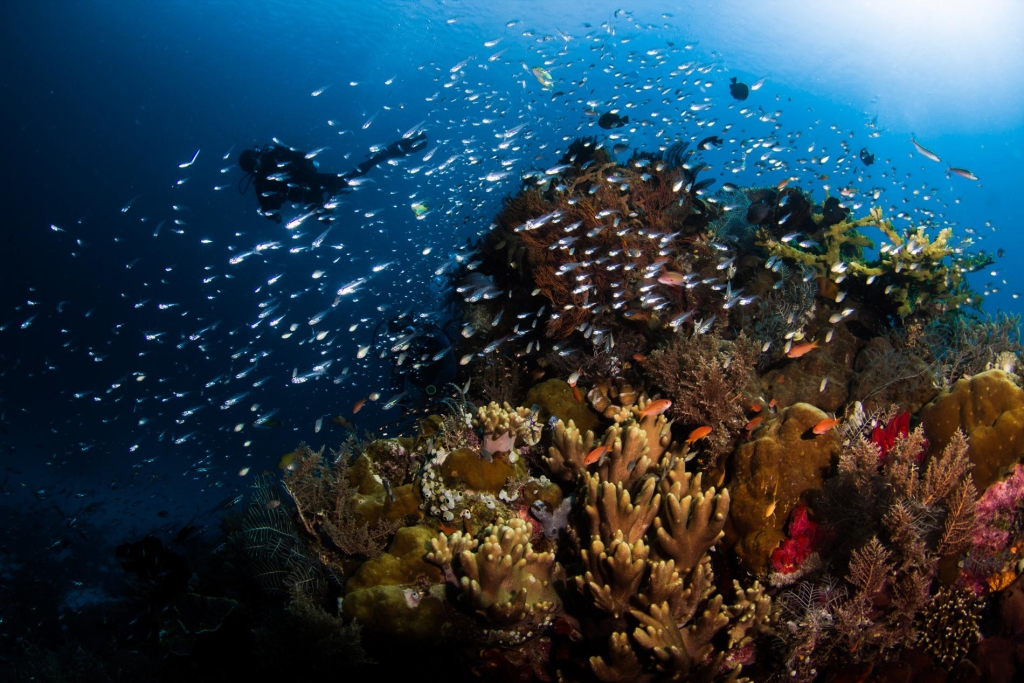
Name: The Cauldron / “Shotgun”
Max.depth: 20
Type: Coral slope / Channel
Current: Mild to ultra strong ;)
Cauldron, also called shotgun by some of the locals, is a drift dive with amazing changes of topography in between Gili Lawa Laut and Gili Lawa Darat. It is named cauldron because of the bowl shaped drop off along the eastern end of the site, which resembles the Spanish cauldron, or large bowl.
This site can be very intense, as the water all funnels through the passage between the islands and creates a very fast current for a few hundred meters, sometimes up to 10 knots!
The dive typically starts in lush coral gardens in the northwest or northeast, though there is something for everyone here. We like the southwest because there is a large coral garden along a sandy bottom. At around 10 meters there is a large coral formation on top of a pinnacle where immense schools of fragile glassfish of all assortment of colors tend to congregate. It is always fun swimming through them and looking into their translucent red, turquoise, and blue bodies.
Further into the channel there is a large wall that extends to a sandy bottom around 30 meters and it is here where immense Gregorian coral tend to hang and if you look closely into the fan corals you will spot pipefish and other small critters. Larger fish, including bump head parrotfish, tend to use the overhangs of the wall for protection. Here and there a turtle can be spotted, and they are usually so busy feeding that they hardly notice that you are right next to them.
After the wall, you will typically swim back and into the sandy patch. Here the current becomes heavy. With less advanced divers, we typically go over the middle edge, as the topography rises and closes in sharply. The current picks up things become fast and all of a sudden you will fly over the edge and into a series of small canyons and reefs, where schooling anchovy, tuna, travelly, and even manta fight and play in the current in a spectacular sight.
The other way to go from the drop-off is for advanced divers, and it is a canyon situated to the northwest where a large amount of water funnels. This part of the dive is only dove on a falling tide form high tide, and it is very extreme in many ways. Computers typically don’t like this and will beep warnings and you get shot around the canyon walls and then vertically up and over a large and rocky slope. It is very enjoyable when done right, and usually you can be rewarded with sights like giant tuna and barracuda that fight the surface current. Along the other side, towards the east, lies the cauldron.
The slope gradually deepens to 12 meters before dumping into a large sandy bowl. Here, there are very colorful patches of coral that are literally teaming with fish. Under the edge of the bowl there is usually no current, while if you look up you will see plenty of fish fighting at the surface. It is truly a sight to behold. Along the sandy bowl there are usually large patches of garden eels, stingrays, and even sharks.
The dive is finished by pursuing soft hydra coral to the northeast side, where the most lush and healthy coral garden in the park is. This garden is vibrant with turtles, macro life, and colors galore. Typically, after the intense excitement of the drift from the passage between the islands, it is a wonderful experience akin to meditation to sit along the coral and look at all the vibrant colors of fish and marine life and totally relaxes.
We also dive this site in reverse with a rising tide, starting in the coral garden and ending along the northern slope or southern wall of the opposite end. Every dive here is different, and many times it is a place that people ask to do again and again.
One of the best muck dives in the “Komodo National Park”; this is a macro lover’s dream come true. Wai Ni Loo is a short drive from Rinca Island, and it is easily combined with a Rinca dragon hike and another dive to make a fulfilling daytrip if you do not have much time. It is also one of the best places to spot painted frogfish, mandarin fish, ghost pipefish, as well as a large variety of other hard to see species that one may miss. In addition, a large amount of porcupine fish, triggerfish, scrawled filefish, and giant pufferfish make Wai Ni Loo their home.
On first sight, the dive might look as if it does not have much to offer, but to the patient and observant eye, there is so much to see and find here. A plethora of nudibranchs, slugs, and flatworms adorn this site in every possible color combination, from the cerulean blue and school bus-yellow of the Hoff’s Sapsucking Slug, to the crimson red and white crown of the Chamberlin’s Nembrotha. Under large rock mounts full of coral you will find packs of zebra lionfish, scorpion fish, octopus, ribbon moray eels, an incredible variety of shrimps, and even a giant spiny lobster or two. Along the sandy slope there is a large variety of large sea fans, soft corals, and sea pens intersperced. Look carefully and you might catch a giant thorny stingray playing in the sand or a blue spotted ribbon-tail stingray skirting by.
Turtles of both the hawksbill and green variety also use this site to feed on the soft corals in more shallow water, and you can pass your time at a safety stop by playing with them, or looking carefully for the hidden wonders among the corals. This site has everything, and though it does not have the corals of the other sites, for those experienced divers that are truly interested in the macro environment, this is the place to find those animals that you rarely get to spot on other dives.
Max.depth: 40m
Type: Overhang
Current: Mild
This site has many names, including Bonsai, One Tree, and Lonely Tree, but despite those names it is unmistakable. Perched precariously on a boulder jutting from the sea is a single fragile mangrove tree marking the site aptly named Bonsai .
This is a site mostly for advanced divers and those that want to play. Along the south and western sides of this site at 20 and 30 meters are incredible overhangs, caves, valleys, and swim-throughs where large emperor sweetlips, napoleon wrasse, hawksbill turtles, and grouper seek shelter. Along the south side there are swim-throughs going as deep as 40 meters where giant red and white fan corals precariously hang onto rocky outcroppings. This is a place to play and perfect your buoyancy as you take on the role of an underwater explorer, closely navigating the overhead environments.
Bonsai is not all holes and rocks, however. The coral gardens that surround the entire island are incredibly pristine with invariable amounts of color radiating from stag horn and table corals. Sharks are known to use this place as a resting stop and more often than not, one can look under a table coral and see the white tipped fins of a baby reef shark. An Expansive coral garden to the north protects most of the site and it is ideal for snorkeling as long as the current is favorable.
Extremely dangerous currents, however, can sweep this site, and certain areas can become tricky, though with our experienced guides you will not need to worry. In addition, sometimes the visibility is not the best here, so it is advisable to bring an underwater light if you have one so you do not miss anything hiding in the giant caves and overhangs. It is a site worth seeing, especially if you like the feeling of adventure and exploration.
Max.depth: 25m
Type: coral slope / wall
Current: Mild – strong
In the heart of the Komodo National Park, just 23 km from Labuanbajo, this is an amazing island where one can see just about everything. Pengah can be recognized by its three pinnacles that stick out of the water in a straight line from the southwestern side of the island. Depending on the current, you typically dive the south and southwestern side or the northwestern side. On the South side there is a series of walls that extend all the way down past 40 meters, a natural spur on the eastern side provides protection from a falling tidal currents. This wall actually extends all the way along the eastern side to the north and with favorable conditions one can do the whole thing in a series of steps.
Here, along the wall, corals grace every inch of perch. There are usually myriads of fusiliers and small schooling fish. Coral grouper in bright colors hide among the corals and if you look inside the large branching arms of a wine red of the ecrusting and branching fire corals and you will see them staring back, using their large pectoral fins to maneuver for shelter. The Pinnacles sit in shallow water, usually about 2 to 4 meters, so they are not really suitable to dive, but past the pinnacles is a long sloping reef with giant table corals that extends south like a finger and then rolls in bowls all along the western side of the island. Look under the corals and you might come across a sleeping white tip shark! Along this edge of the island there are usually converging currents and sometimes they can be disorienting, but with a falling tide you can continue north and get to another set of walls where larger pelagics such as giant travalley typically school.
Along the north side the walls continue and form a series of cliffs and drop offs that provide shelter and a veritable playground for fish and divers alike, just be careful of the current!
In the shallows all along the craggy island there are stag horn coral beds where banded sea snakes typically look for food by sticking their heads into coral crevices. Along every inch of this site there is something to see, and with so much going on you will not be disappointed.
Max.depth: 30
Type: Wall
Current: Mild
Mini’s Wall is a drift dive that works with a falling tide along North Eastern side of Sebayor Kecil. This is a fun dive that typically involves some type of drift, as the cool water from the North funnels between the islands of Sebayor Besar and Sebayor Kecil. Along the wall there are holes and caves you can access for protection, and along those caves you can see anything from giant spiny lobster to hiding sweetlips. Look out to sea and you might see a pack of devil rays or mantas swimming to access the park’s northern waters. Schools of fusiliers rush past in mass, fighting the current as you sweep past.
Max.depth: 20
Type: Coral slope
Current: Very mild to mild
Sebayur Kecil is a great place for a relaxing dive where you can view a large variety of corals and marine life in a relaxing setting with very little current. This dive runs along a breach that sits on the northern part of the island and it actually consists of a series of different places to dive. Boats typically go here for mooring or anchorage; however sometimes the weather from the north causes wave action that prevents this from happening.
From the mooring there is a coral slope that runs into a pristine white sand bottom where you will spot garden eels, goat fish, and commensal shrimp working alongside the blennies who protect their burrows. Impatient Sea Cumbers are also abundant, along with many other types of echinoderms. Look around, as sometimes you may spot an octopus using its tentacles to squeeze into the burrow and grab a quick meal.
Facing the beach, along the right side is a series of spurs that all have amazing coral formations, all the way to the sandy bottom. Look out to sea and you may spot the random pelagic making its way across the ocean. Further in, towards the coral formations, there are excellent examples of bright white lace coral, many of which have cleaner shrimp where grouper and coral trout go to clean. The spurs create walls of barrel sponges and Gregorian sea fans perched atop multi-colored table and branching corals that stretch out in fantastic fingers, providing protection for a lot of colorful micro-life. At the end there are two choices: one can turn around before the last large spur and go to 5-7 meters along the top of the beach where one can look for day octopus, scrolled filefish, moray eels, cuttlefish, turtles, and lobster. Or you can be more daring.
For the more daring, the last spur juts out a hundred meters or so past the others and provides a great wall with really healthy coral. Past this spur are two seamounts and a valley that sometimes gets swept by strong current. At this area and all along the spur you have the chance to see emperor sweetlips, giant trevally, schools of bluefin trevally, tuna, and other large fish that make this area their home.
From the mooring, if one were to go to the left while facing the beach, they will immediately hit a series of walls after following the sandy slope. Here there is giant fan coral hanging precariously off of cliffs, table corals balancing on stalactites, and caves that one can poke their head in if they are daring. Along the bottom, which goes past 30 meters and is great for a deep dive, there is the occasional white tip shark and spotted eagle ray. The wall continues in a series of waves for a long while and typically one goes on the wall for half the dive and then turns, getting to the top portion where the colors are more vibrant and the cerulean blues and crimson reds of the corals come out in vibrant display.
